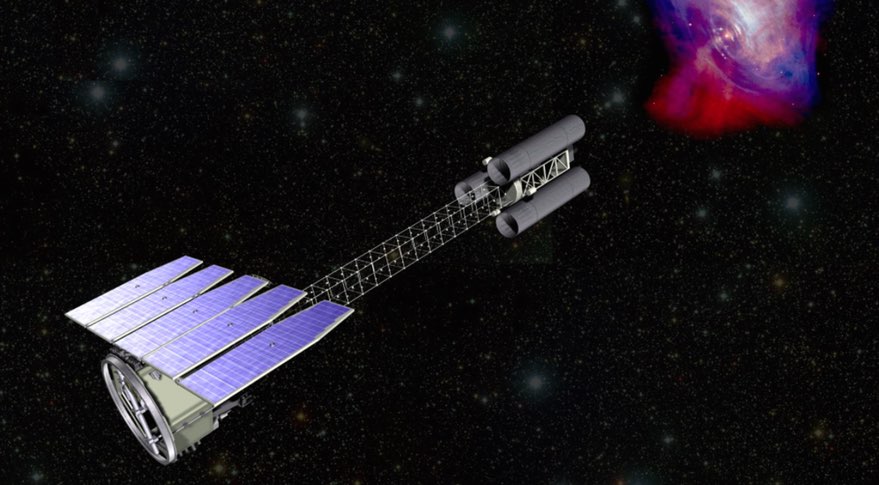SpaceX will launch a new X-ray space telescope for NASA early Thursday. Here's how to watch live.
Liftoff is set for 1 a.m. EST (0600 GMT).
CAPE CANAVERAL, Fla. — SpaceX will launch a new space observatory for NASA overnight and you can watch the action live online.
The private spaceflight company will launch the Imaging X-ray Polarimetry Explorer (IXPE) on one of its previously flown Falcon 9 rockets. The frequent flier is scheduled to blast off at 1:00 a.m. EST (0600 GMT) from Pad 39A at NASA's Kennedy Space Center here in Florida.
You can watch the launch live in the window above and on the Space.com homepage, courtesy of SpaceX. Live coverage will begin about 15 minutes before liftoff. You can also watch the launch directly via SpaceX and on YouTube.
Related: Our X-Ray universe: Amazing photos by NASA's Chandra X-Ray Observatory
The IXPE satellite will provide astronomers with a new tool to probe the mysteries of the universe. The refrigerator-sized satellite is equipped with three identical telescopes that will be able to study the polarization of light (meaning which direction the light particles are scattered) from cosmic sources such as black holes and neutron stars. With IXPE's observations, astronomers will be able to study the structure and mechanisms that power these types of enigmatic cosmic objects.
"IXPE will help us test and refine our current theories of how the universe works," Martin Weisskopf, the mission's principal investigator said during a prelaunch briefing on Tuesday (Dec. 7). "We may even discover more exciting theories about these exotic objects than what we’ve hypothesized."
Thursday's flight is the 28th Falcon 9 mission for SpaceX so far in 2021. The flight also marks the second rocket launch from the Cape this week. Early Tuesday morning (Dec. 7), an Atlas V blasted off from an adjacent launch pad, carrying a mix of payloads into space for the U.S. government.
Get the Space.com Newsletter
Breaking space news, the latest updates on rocket launches, skywatching events and more!
Related: SpaceX's most-flown Falcon 9 rocket is a sooty veteran after 10 launches

Thursday's pre-dawn flight will continue a busy month here on the Space Coast, with as many as five rocket launches on the calendar for December. Those launches include four Falcon 9s and one United Launch Alliance (ULA) Atlas V. So far, two of the five have blasted off without a hitch.
To ensure that Thursday's Falcon 9 rocket is ready to fly, SpaceX briefly fired up the nine Merlin 1D engines on the rocket's first stage on Saturday (Dec. 4). The test, called a static fire, is a routine part of SpaceX's prelaunch procedures and helps engineers know that the rocket is ready to fly.
SpaceX then confirmed that everything was "go" for launch on Thursday morning with a 2.5-hour window.

After the rocket successfully carries the IXPE satellite into space, its first stage will touch down on SpaceX's drone ship, "Just Read the Instructions."
Forecasters at the 45th Space Delta have said that there's a 80% chance of favorable conditions for liftoff Thursday morning, with the primary concerns being cumulus clouds and thick clouds. If necessary, there is a backup attempt slated for Friday, with conditions also at 80% "go."
Follow Amy Thompson on Twitter @astrogingersnap. Follow us on Twitter @Spacedotcom or Facebook.
Join our Space Forums to keep talking space on the latest missions, night sky and more! And if you have a news tip, correction or comment, let us know at: community@space.com.

Amy Thompson is a Florida-based space and science journalist, who joined Space.com as a contributing writer in 2015. She's passionate about all things space and is a huge science and science-fiction geek. Star Wars is her favorite fandom, with that sassy little droid, R2D2 being her favorite. She studied science at the University of Florida, earning a degree in microbiology. Her work has also been published in Newsweek, VICE, Smithsonian, and many more. Now she chases rockets, writing about launches, commercial space, space station science, and everything in between.









